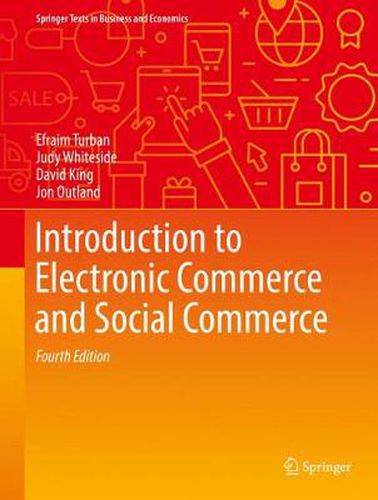Readings Newsletter
Become a Readings Member to make your shopping experience even easier.
Sign in or sign up for free!
You’re not far away from qualifying for FREE standard shipping within Australia
You’ve qualified for FREE standard shipping within Australia
The cart is loading…






This is a complete update of the best-selling undergraduate textbook on Electronic Commerce (EC). New to this 4th Edition is the addition of material on Social Commerce (two chapters); a new tutorial on the major EC support technologies, including cloud computing, RFID, and EDI; ten new learning outcomes; and video exercises added to most chapters. Wherever appropriate, material on Social Commerce has been added to existing chapters. Supplementary material includes an Instructor’s Manual; Test Bank questions for each chapter; Powerpoint Lecture Notes; and a Companion Website that includes EC support technologies as well as online files.
The book is organized into 12 chapters grouped into 6 parts. Part 1 is an Introduction to E-Commerce and E-Marketplaces. Part 2 focuses on EC Applications, while Part 3 looks at Emerging EC Platforms, with two new chapters on Social Commerce and Enterprise Social Networks. Part 4 examines EC Support Services, and Part 5 looks at E-Commerce Strategy and Implementation. Part 6 is a collection of online tutorials on Launching Online Businesses and EC Projects, with tutorials focusing on e-CRM; EC Technology; Business Intelligence, including Data-, Text-, and Web Mining; E-Collaboration; and Competition in Cyberspace.
$9.00 standard shipping within Australia
FREE standard shipping within Australia for orders over $100.00
Express & International shipping calculated at checkout
This is a complete update of the best-selling undergraduate textbook on Electronic Commerce (EC). New to this 4th Edition is the addition of material on Social Commerce (two chapters); a new tutorial on the major EC support technologies, including cloud computing, RFID, and EDI; ten new learning outcomes; and video exercises added to most chapters. Wherever appropriate, material on Social Commerce has been added to existing chapters. Supplementary material includes an Instructor’s Manual; Test Bank questions for each chapter; Powerpoint Lecture Notes; and a Companion Website that includes EC support technologies as well as online files.
The book is organized into 12 chapters grouped into 6 parts. Part 1 is an Introduction to E-Commerce and E-Marketplaces. Part 2 focuses on EC Applications, while Part 3 looks at Emerging EC Platforms, with two new chapters on Social Commerce and Enterprise Social Networks. Part 4 examines EC Support Services, and Part 5 looks at E-Commerce Strategy and Implementation. Part 6 is a collection of online tutorials on Launching Online Businesses and EC Projects, with tutorials focusing on e-CRM; EC Technology; Business Intelligence, including Data-, Text-, and Web Mining; E-Collaboration; and Competition in Cyberspace.